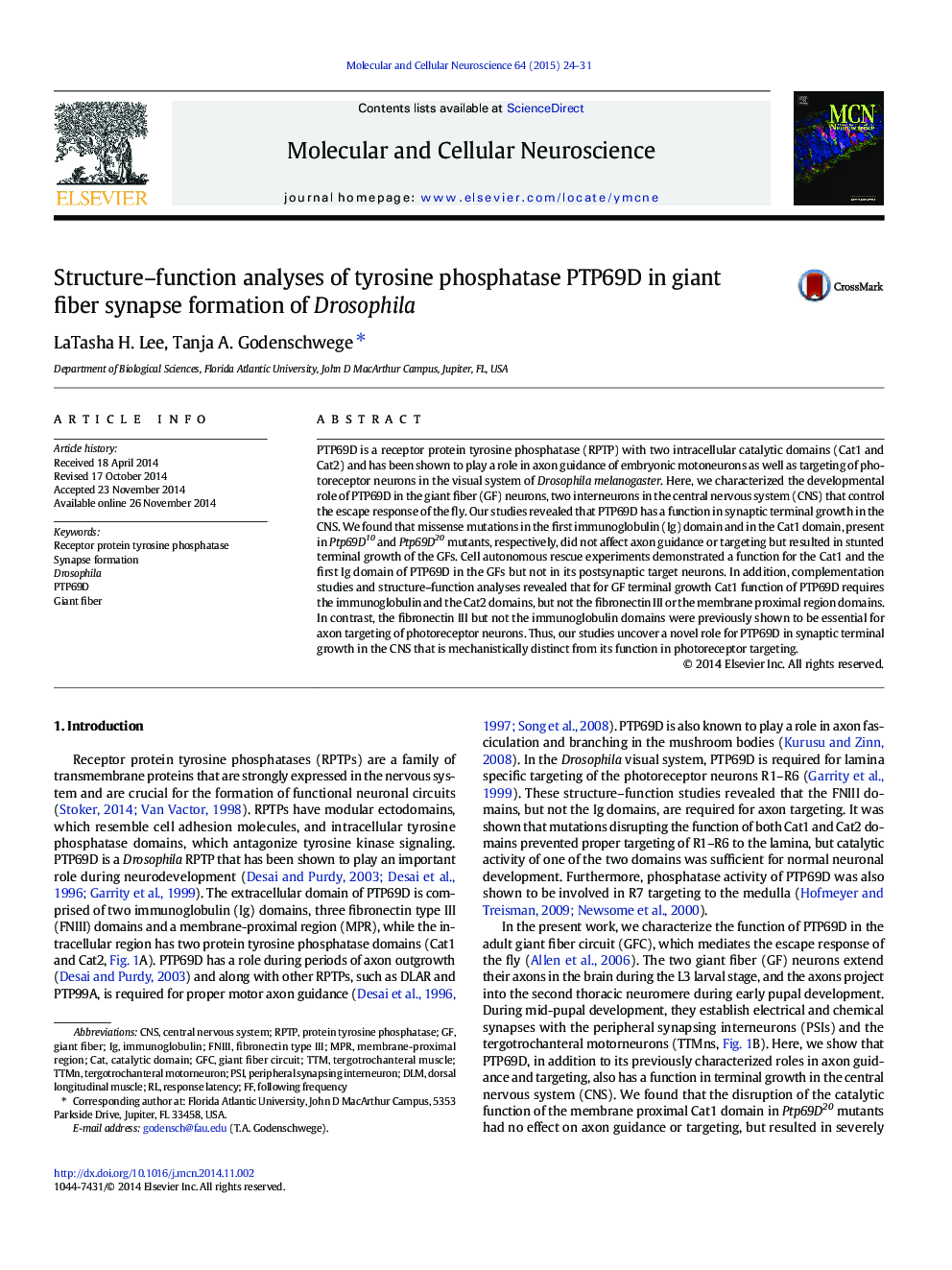| Article ID | Journal | Published Year | Pages | File Type |
|---|---|---|---|---|
| 8478588 | Molecular and Cellular Neuroscience | 2015 | 8 Pages |
Abstract
PTP69D is a receptor protein tyrosine phosphatase (RPTP) with two intracellular catalytic domains (Cat1 and Cat2) and has been shown to play a role in axon guidance of embryonic motoneurons as well as targeting of photoreceptor neurons in the visual system of Drosophila melanogaster. Here, we characterized the developmental role of PTP69D in the giant fiber (GF) neurons, two interneurons in the central nervous system (CNS) that control the escape response of the fly. Our studies revealed that PTP69D has a function in synaptic terminal growth in the CNS. We found that missense mutations in the first immunoglobulin (Ig) domain and in the Cat1 domain, present in Ptp69D10 and Ptp69D20 mutants, respectively, did not affect axon guidance or targeting but resulted in stunted terminal growth of the GFs. Cell autonomous rescue experiments demonstrated a function for the Cat1 and the first Ig domain of PTP69D in the GFs but not in its postsynaptic target neurons. In addition, complementation studies and structure-function analyses revealed that for GF terminal growth Cat1 function of PTP69D requires the immunoglobulin and the Cat2 domains, but not the fibronectin III or the membrane proximal region domains. In contrast, the fibronectin III but not the immunoglobulin domains were previously shown to be essential for axon targeting of photoreceptor neurons. Thus, our studies uncover a novel role for PTP69D in synaptic terminal growth in the CNS that is mechanistically distinct from its function in photoreceptor targeting.
Keywords
Related Topics
Life Sciences
Biochemistry, Genetics and Molecular Biology
Cell Biology
Authors
LaTasha H. Lee, Tanja A. Godenschwege,
